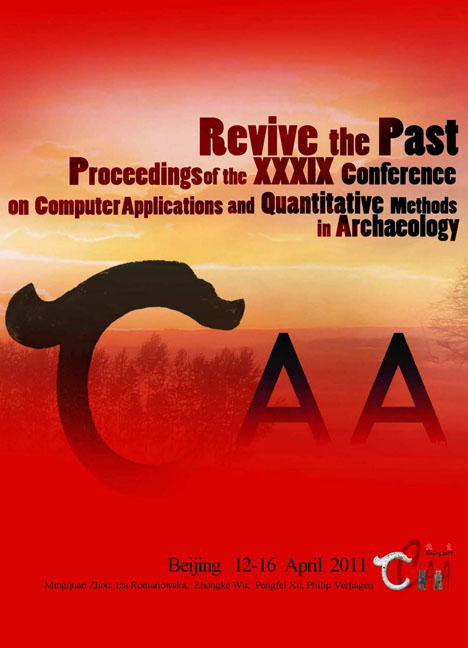 Revive the Past
Revive the Past Ancient Vase 3D Reconstruction and 3D Visualization
Published online by Cambridge University Press: 23 June 2021
Summary
Abstract:
The paper describes the process of 3D virtual reconstruction of an ancient fragmented vessel. The work followed several steps: identification of significant potsherds for the 3D reconstruction, the 3D acquisition of the fragments with laser scanner, the analysis of the 3D model (diameter, vertical projection, orientation and thickness), 3D reconstruction and modelling of the vessel, photographic acquisition and orthostereoscopic rendering for 3D visualization.
Key Words: Archaeology, 3D Modelling, Laser Scanning, Open-Source Software, Ortho-Stereoscopy.
Introduction
Many archaeological finds uncovered during excavations are pottery fragments. Archaeologists select identifiable ones in order to assign their type, to understand cultural, economic, chronological and social aspects of the site under investigation. The main steps of potsherds study are: orientation of fragments, diameter estimation, profile estimation and drawing (diameter, vertical projection, profile). Our case study concerns the study and 3D reconstruction of a set of fragments belonging to one vessel, (roughly and partially) restored by the conservation laboratory of the Archaeological Museum of Larnaca, Cyprus. Since conservators were unable to fully understand the original shape of the vessel, we tried to virtually reconstruct it. The main difficulties related to this type of work are: a large amount of small fragments, inability to place them properly along the 3D surface and the inaccurate physical restoration that forced us to define a virtual error correction (Goel and Priyank 2005). All potsherds larger than 10cm were digitally acquired with a laser scanner (multi-stripe laser triangulation) and opensource software were used for post-processing (MeshLab, Blender). During the postprocessing the correct orientation of fragments was calculated through geometric analysis; the potsherds physically restored were virtually separated and repositioned in the right way. Once the 3D virtual shape was obtained, the vessel was digitally rebuilt and textured using photographs with colour calibration. Blender software was used for modelling and for the stereoscopic virtual set up of the vessel in order to obtain the “ortho-stereoscopic” rendering. The final result is the 3D model of the vessel, which was used for 3D stereoscopic vision simulation. Illusionary depth perception and immersive view experience allows to better understand the shape and the volume of an object which is unreadable in the fragmented conditions or in traditional restoration.
- Type
- Chapter
- Information
- Revive the PastProceedings of the 39th Conference of Computer Applications and Quantitative Methods in Archaeology, pp. 59 - 64Publisher: Amsterdam University PressPrint publication year: 2012


